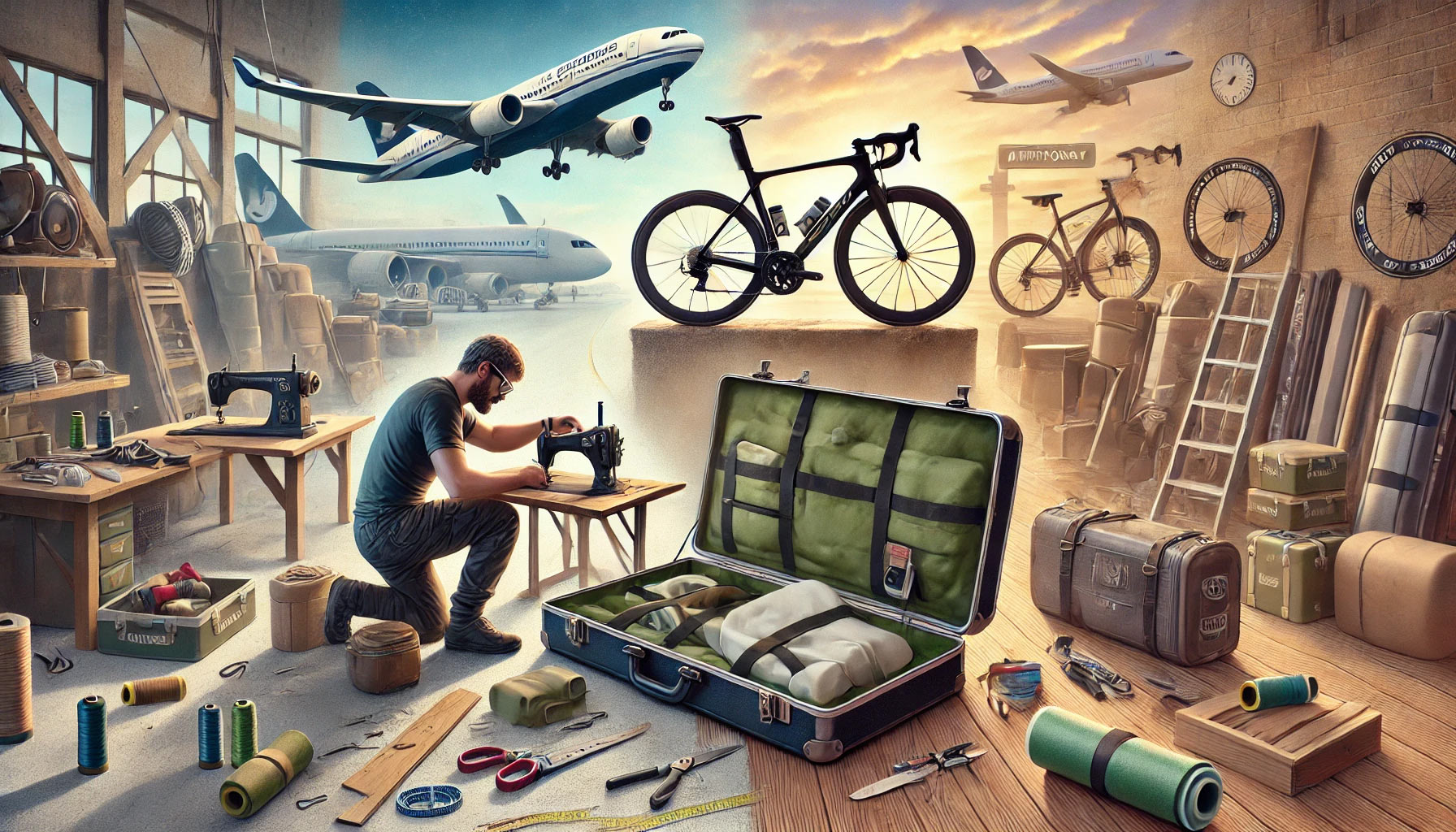Why I Started Orucase and How Our Mission Has Evolved Over the Past 13 Years

In 2012, with fifty bucks left in my bank account and one last chance at prize money in the USA Crits Series finals, I built my own bike travel case. It was the final race of my third pro season, and my team’s budget had dried up. Faced with a $250 bike fee I couldn’t afford, I dusted off my seventh-grade sewing skills and pieced together a DIY case. That janky case didn’t just get me to the race—it set the stage for Orucase, making bike travel easier for so many others who faced the same unreasonable fees.
Back then, before Orucase existed, my teammates and I relied on whatever bags we could find. We’d buy oversized suitcases from street vendors in Manhattan, stuffing them with stolen hotel towels and hoping our bikes would survive the trip. Jeremy Powers coined the term “airport ninja” for how we’d sneak our bikes through airports, hoping no one would catch on. I only ended up making the first true “airport ninja” bike case because my go-to bag was on loan to a teammate.
With my last fifty dollars, I bought some canvas, a foam pad, and plywood. Using my girlfriend’s sewing machine, I stitched together a rough-looking case. It wasn’t exactly as I’d pictured it, but it did the job: I avoided the bike fee, placed well in the race, and had the cash I needed to keep me afloat until the start of my contract. But the real turning point came when someone offered to buy the case from me as I was leaving the race. What began as a scrappy, somewhat embarrassing hack was now starting to look like an opportunity.’

Back home in Vermont, I teamed up with my college roommate and training buddy, Colin Jaskiewicz. Together, we got to work on creating a case that could handle the demands of bike travel without drawing attention from the airlines. We added backpack straps for carrying ease over long transfers, all while keeping the shape inconspicuous to avoid extra fees. Our first case was a rough prototype, but as we iterated, it quickly became the go-to travel case for a big portion of the US peloton.
By 2016, after stepping away from racing, I was able to focus fully on building Orucase as a brand. When we started surveying customers, we learned that many of them weren’t racers like us but business professionals and recreational riders who wanted a compact, convenient case for their bikes. Our design’s benefits became even clearer: you could fit the case in the trunk of a sedan, making travel logistics, especially in places like Europe, much simpler and more cost-effective.
We also discovered that our product's durability was the second leading reason people were opting to use our bike cases. At that time, we were still making cases by hand (I personally sewed close to a 1,000 of them, each taking about four hours to build), and our reputation for durability came from a fear of making something that wouldn’t hold up. We double and triple-stitched every seam, a practice that became the foundation of our lifetime guarantee, now a cornerstone of Orucase quality.
Our value proposition was straightforward: “The case pays for itself in savings on bike fees after just one round-trip flight.” Then, in 2019, things shifted. Major US airlines dropped their bike fees, replacing the 62” rule with a simpler policy: only bike cases over 50 lbs would face extra fees. It felt like a blow, especially since we’d just scaled up production after winning Bicycling Magazine’s Best of Sea Otter award for our new B2 case. But instead of hurting us, this policy shift removed a major barrier, empowering more people to travel confidently with their bikes. Not everyone shares my thrill for “sneaking” bikes through, and now they didn’t have to.

That’s not to say it’s been all smooth sailing. Recent trends in bike design toward integrated everything are making it harder to pack bikes in cases, adding new obstacles for the average rider. These designs may look sleek, but they complicate bike travel, bike maintenance, all for aerodynamic gains that only truly benefit a couple people in the world. It's frustrating for me because in my opinion the industry should be moving towards making riding bikes more accessible, not less.
If you’ve made it this far, you likely already know that we’re working on a solution to transporting bikes where the handlebars cant be removed, which I’m really excited about, but there’s no way that case will be fitting in the back of a regular car.

We build products for people who want to explore freely, without worrying about whether their gear will arrive safely or if bringing their own bike will be more difficult than its worth. I feel so lucky for the opportunity I had to race all over the world, but the lasting memories aren’t from the races themselves, it was everything else. The stories, friends, food, and the unexpected adventures I could have never imagined.
At Orucase, our mission is simple: to make every adventure possible for those who see travel as more than just a destination. Over the past 13 years, a lot has changed, not just in bike travel and the industry, but in how we work to bring real value to the sport we love and owe so much to. Whether you’re a long-time customer or considering flying with your bike for the first time, thank you for being part of our journey. Our commitment remains as strong as it was on day one: to make sure your bike is your ultimate travel companion, ready for wherever the road takes you.


